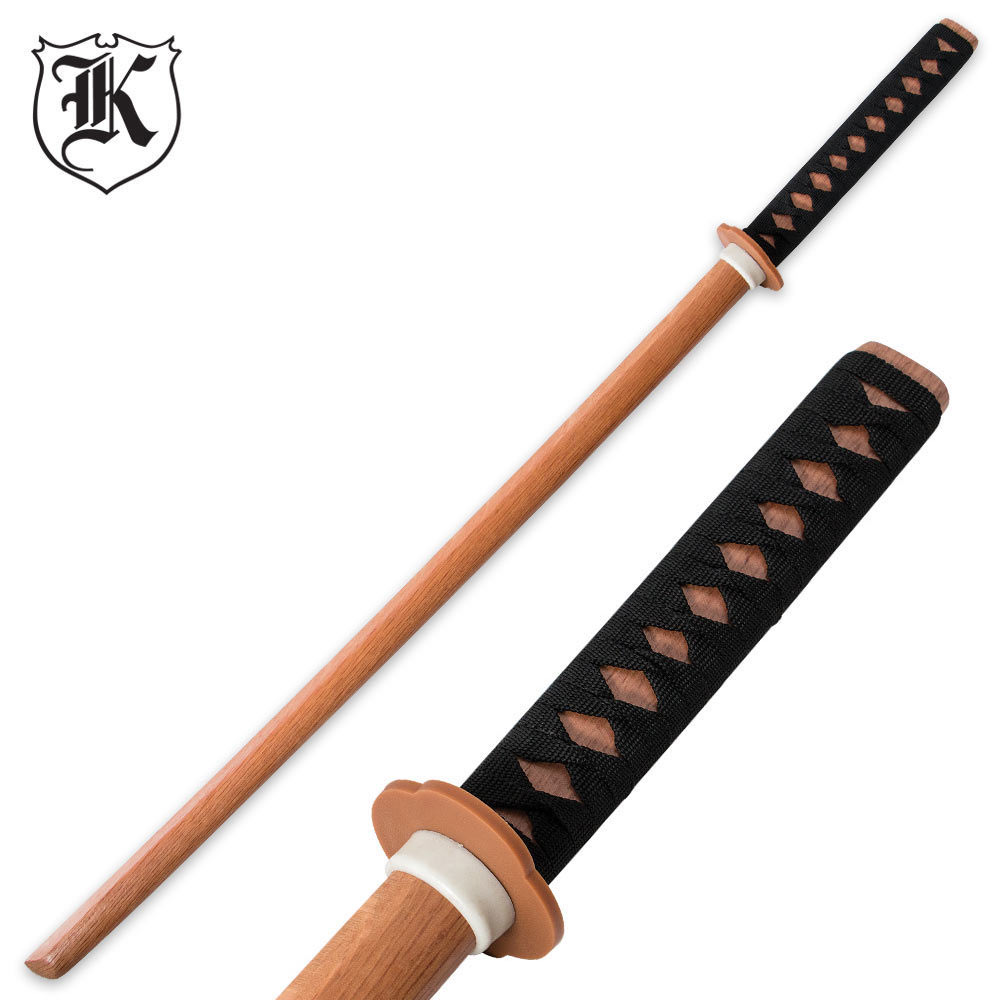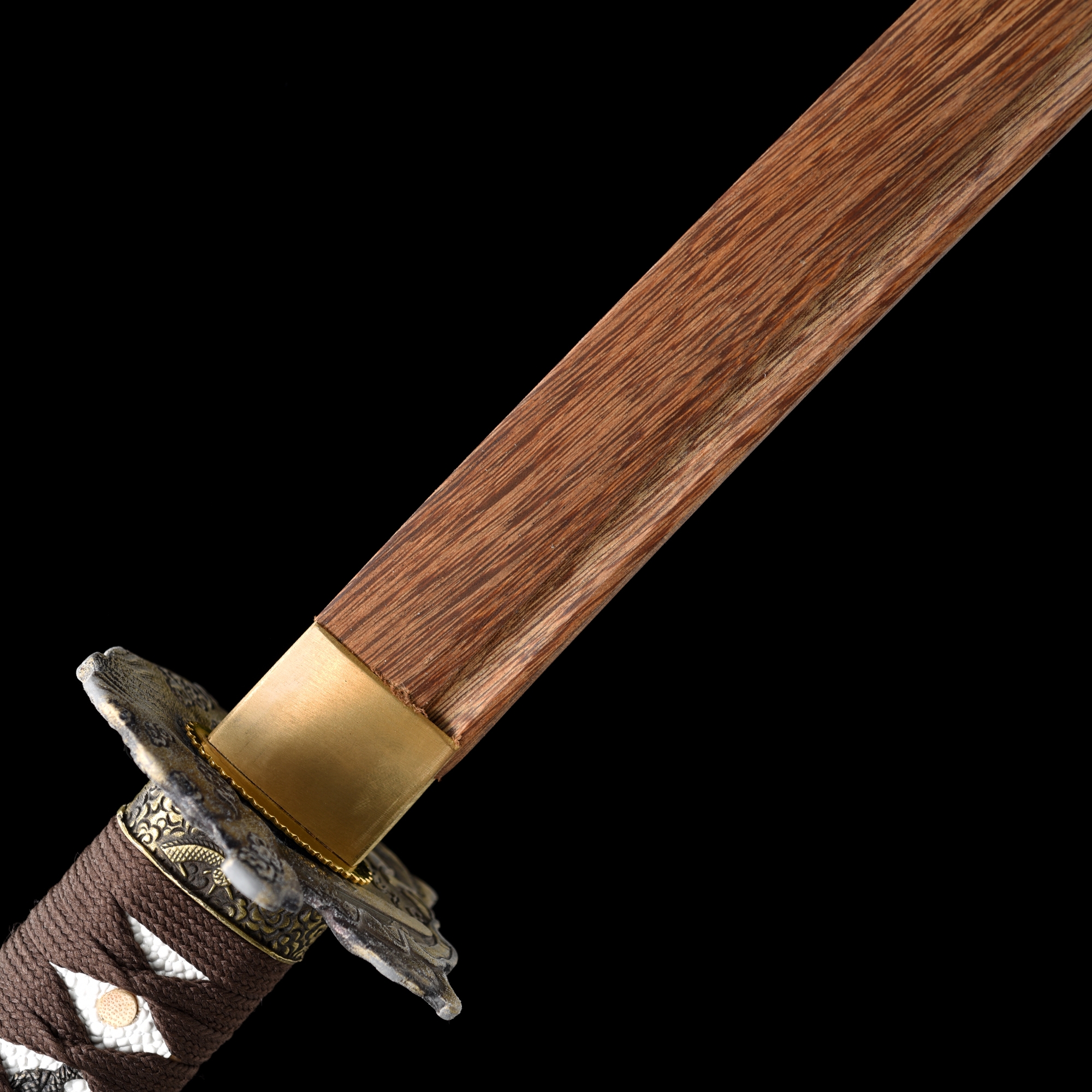

Method 3 – Try a Wooden/Bokken or Metal/Iaito Katana Handle That will give you a good idea of how big your grip needs to be and how long the handle needs to be. Put one fist on top of the other, like you’re holding a sword. Place your palms on the table to form a 90-degree angle with the surface. Put your hands on the table and sit down. However, this method will give you good feedback and confirm the handle length you are considering. Most Katanas are about the same size, so the length of their handles won’t vary by much. That will give you a good idea of how long your Tsuka should be. Measure your arm from your elbow to your wrist. The handle shouldn’t cause the Katana to feel awkward in your hands. When looking for a perfect Katana handle, you can try a couple of these methods below to ensure that it is the right handle for you.
Wood katana how to#
How to Find the Perfect Katana Handle for YOU When the wrapping goes through the Kashira, the pommel, and the last part of the Katana handle, it makes the end knot. Most of the time, the Tsuka-Ito is tied in a knot at one side of the handle. Makidome is the last step in assembling the Tsuka-Ito silk (the patterned wrap) around the hilt. The Kashira is a very large piece of decor with a small hole for the Makidome and holds the handle’s wrapping. It’s well-made with strong materials and can be used to hit someone in the head when they get too close. The Kashira is the Katana’s end cap, also called the pommel. This is where famous swordsmiths often write their names or signatures. The Nakago (tang) is the hidden part of the Katana blade under the handle. It is shaped like a nail and placed in the holes that are made in the same area as the blade and handle. The Fuchi is the metal tube between the handle and guard that holds the Tsuka and the other parts together. But if the handle is too polished and smooth, like sanded wood, you may lose your grip if your hands are sweaty. Surprisingly, these pieces of decor are also very useful! When the surface is bumpy, it’s easier to hold. These works of art show animals, flowers, parts of nature, or personal symbols that will be important to the person who will own the sword in the future. These are small, intricate symbols and sculptures stuck on top of the wrapping of the ray-skin Menuki. Most of the time, the Same is white or a color that stands out from the Menuki so it can be seen. The layer is made of leather, stingray skin, or the belly of a shark, whereas some cheaper Katanas consist of plastic. The layer under the cotton is the Same or Samegawa (string). This wrapping process is called Tsukamaki and is a skill that takes time and practice to learn and master. The smooth piece of wood is wrapped tightly with this colorful string to increase friction and make it easier to hold. The patterned wrap around the wooden handle is called the Tsuka Ito and is made of cotton or silk.

The main parts of the Tsuka consists of the following: Tsuka Ito Many swordsmiths in Japan and worldwide take pride in creating these unique handles. The Tsuka is the Japanese word for the Katana handle. The handle is mostly straight, and the Katana only starts to curve from the Tsuba (Katana’s guard). Although the handle might seem very curved from a distance, that isn’t the case. The Katana handle does have a very soft curvature. So when looking to buy a handle, make sure that its weight falls in this range. This makes it very light to use while offering a fantastic grip and giving more power and strength to the user. The weight of the Katana handle is usually 300 – 400 grams. In addition, the ability to use both hands instead of just one produces a lot of power and a firm grip.

The handle’s longer length will enable you to wield the Katana much easier. The handle length is proportionate to the Katana blade, which is ⅓ of its total size. The average Katana handle is 25 – 30 cm long, and the blade is 60 – 70 cm long. Of course, some cheaper modern Katana handles are made from plastic too, but the wood offers much better grip and sturdiness. The Katana handle is mainly made of wood. The Katana handle is highly recognizable because of its unique characteristics. A Katana Handle with a dark red Tsuka Ito


 0 kommentar(er)
0 kommentar(er)
